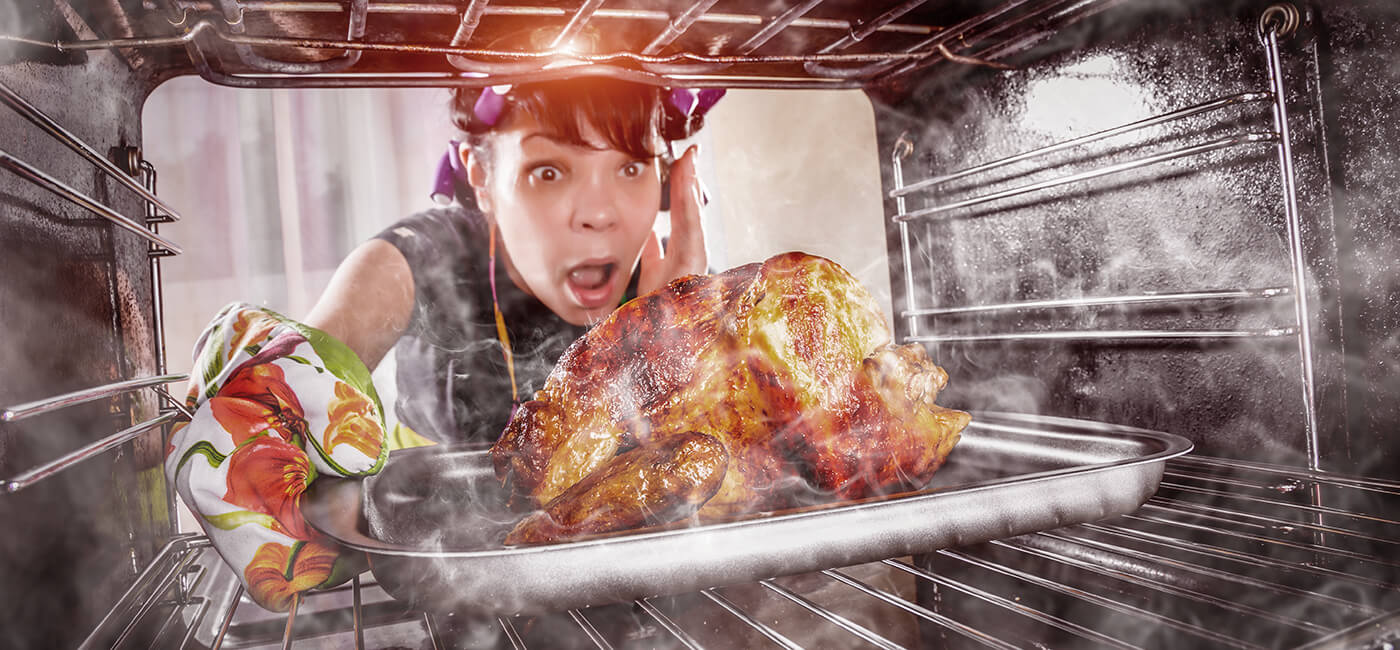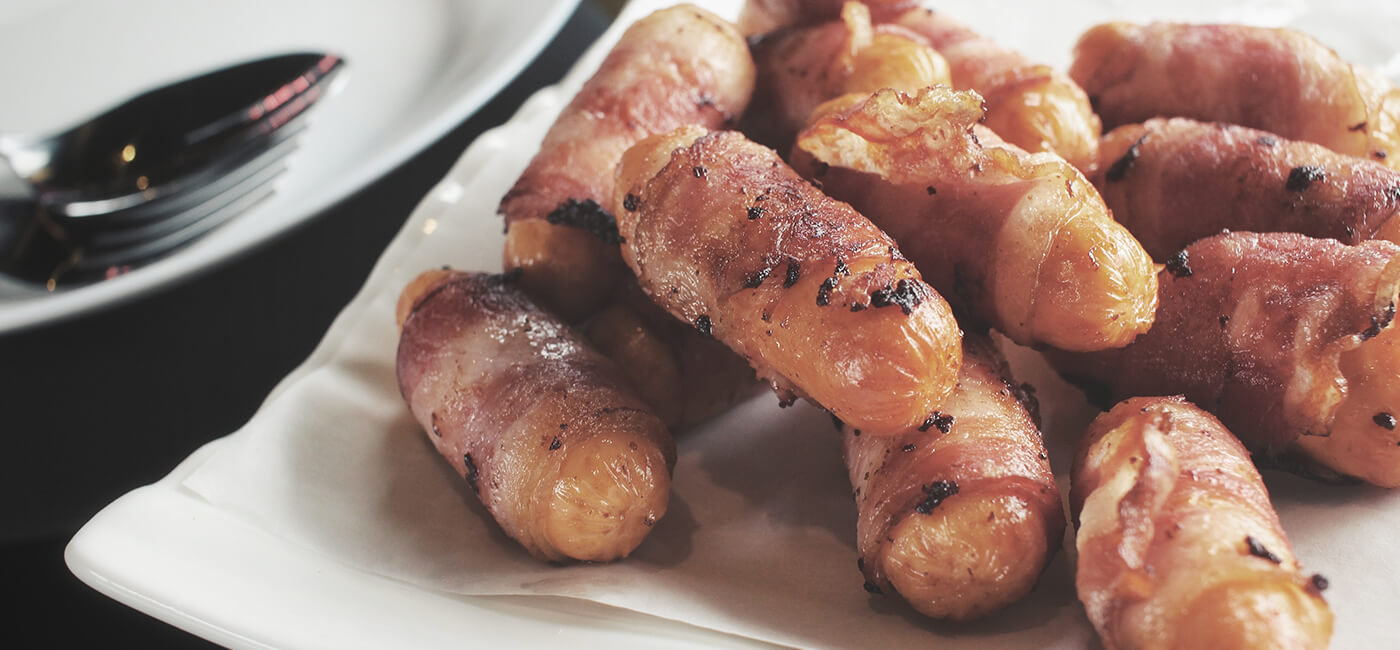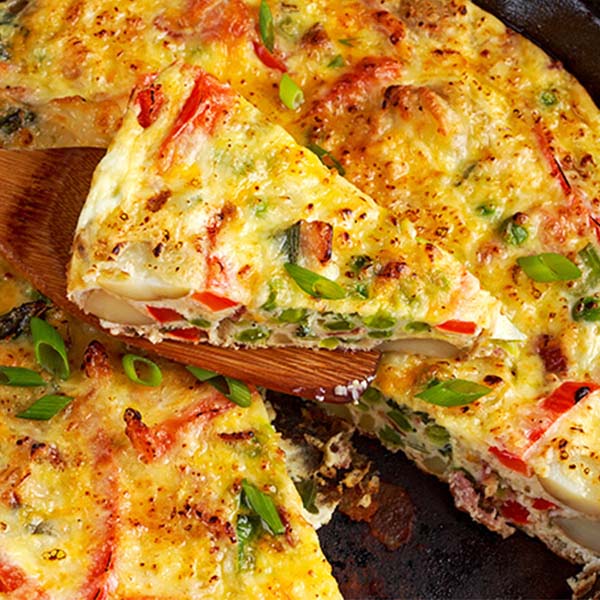It’s a few weeks before Christmas and already you find yourself in a panic. You’ve committed to cooking for 10 on the big day, with a chance that another second-cousin once removed and her boyfriend might pop around too. What on Earth were you thinking of? You’ve only tried to cook Christmas dinner once before and it didn’t end up so well back then (well, you were a student, and that was almost 10 years ago, and your cooking skills have improved significantly since then, but still…this is CHRISTMAS DINNER for goodness sake!).
But it’s too late to back out now. Everyone’s looking forward to cramming around the dinner table at yours. They’ll bring the bottles, your job is simply to put on a feast fit for a king. No pressure.

Here’s the good news – we’ve got your back! Forget frantic note taking in front of a celebrity cookery programme a week before Christmas, all you need to know about preparing the ultimate feast is right here, bullet pointed, straight-forward and allowing for sanity checks at various points in the process. So sit back, press print, read and relax. You’ll be fine. Dinner will be a hit. Aunty Pam will claim her turkey was always better but everyone else will know that yours is the best. And that bacon on top of the turkey…how delicious! What was it called again? spoiltpig?…

First off, before we start our step-by-step guide, let’s give you an overview of Turkey sizes and cooking times.
If you’re cooking for more than 15 people you’re going to need two birds. And also – what were you thinking?!
To test, use a digital thermometer. When cooked, turkey thighs should read 80oC, breasts 75oC. Be sure to check in a couple of places around the turkey. All juices should run clear.
Where do I start?
You start the day before. Prep ahead so you can give yourself high-fives on Christmas Day.
- POTATOES: Peel them, cut them into ‘roast potato’ size pieces and par boil (ie in boiling water for around 10mins). When tender, drain them, let them cool, cover in foil and leave in the fridge.
- PARSNIPS: Peel them, cut them lengthways and halve and parboil for 3mins.
- CARROTS AND SPROUTS: Peel these and chop up where necessary. Put them in a large pan of cold water and leave with a lid on until tomorrow.
- STUFFING: Regardless of whether you’ve made your own or gone down the route of a packet, this can be rolled into balls and put on a tray ready to go into the oven tomorrow.
- STOCK (for gravy): Remove the giblets from your turkey and place into a big stockpot. Add halved white onions, carrots, celery, garlic cloves, black peppercorns and 2 bay leaves. Cover with cold water and slowly bring to the boil, before simmering for 30mins skimming off any scum as it rises to the top. Remove the veg and giblets and keep the stock in a bowl to one side for tomorrow’s gravy.

This plan is assuming you’ll all be eating early afternoon (2ish) and serving a feast for 10 hungry mouths.
 4.00am
4.00am
Get woken up by the kids. Manic unwrapping of Christmas stockings ensues, bleary eyed parents stumble towards the kettle for coffee.
 5.00am
5.00am
Kids are fully on a sugar rush. Parents are on coffee number 4. Yes, it is too early to crack open the fizz.
 8.00am
8.00am
You’ve been up for hours but caffeine is keeping you going. Kids are still rushing on sugar. Radio is blasting Christmas hits of yore. Now is the time to take the turkey out of the fridge. Leave the turkey to reach room temperature.
 8.30am
8.30am
Hurrah! Open that fizz.
 9.00am
9.00am
Preheat the oven as per our table above. Put the turkey in an almighty roasting tin. Rub the entire bird generously with slightly salted butter (you’ll probably do the best part of a packet of Lurpak spreadable if we’re honest). Now get out your packs of spoiltpig streaky bacon. Cover every part of the turkey (even legs) with the rashers of bacon, leaving no part of the turkey skin exposed. 3 packets should do the trick, but you may need more spoiltpig for larger birds.
 9.30am
9.30am
Cover the turkey loosely with foil and put the turkey in the oven. Top up your glass of fizz and alternate between that and your mug of coffee.
 9.50am
9.50am
Turn the heat of the oven down to 160oC
 10.20am
10.20am
Time for the turkey baster! Get the turkey juices and baste that bird well so that it stays succulent and you don’t end up eating a really dry turkey come 2pm.

 10.50am
10.50am
Baste again.
 11.00am
11.00am
Tell the kids that there is no breakfast and that they should just keep eating their chocolate selection box instead. Hand them the Christmas crackers and get them to ‘help’ Aunty Pam and Uncle Kev lay the table ready for the feast (even though it’s a few hours off yet). Toast kids being out of your hair with a sip of fizz.
 11.20am
11.20am
Baste the turkey.
 11.50am
11.50am
Baste the turkey.
 12.20pm
12.20pm
Baste the turkey. Chuck away that foil – it’s no longer needed! Remove the bacon from the top of the turkey and put on a serving platter. It’s all about crisping up that turkey now. Back in the oven it goes. As for the spoiltpig bacon – that can now be distributed among the hungry masses to pick on, or can be saved and crumbled into the Brussel sprouts should you wish.
 12.30pm
12.30pm
Grab your jar of Goose Fat and blob it out into the tray you’re going to do the roast potatoes in. Put in the oven so that the fat starts to melt.
 12.40pm
12.40pm
Remove the tray of hot fat from the oven and throw your par boiled potatoes in. Give them a good mix so that they’re properly covered in the melted goose fat. Now put them in the oven.
 1.15pm
1.15pm
Hurrah! The turkey can come out of the oven! Find a spot in the kitchen where you can leave the turkey, covered loosely in foil with a tea towel on top, so it can rest well. Good luck finding that spot in the kitchen though, extra points for not burning yourself (or anyone else) in the process. More fizz.
 1.25pm
1.25pm
Brush the parsnips with light olive oil or vegetable oil, put on a baking tray and pop in the oven. At this point, put your stuffing balls into the oven too. Nearly there…

 1.30pm
1.30pm
Fill the kettle and turn it on.
 1.30pm
1.30pm
Get those cocktail sausages! Wrap yummy rashers of spoiltpig bacon around each sausage, put them in a tray and in the oven.
 1.35pm
1.35pm
Put the sprouts and carrots on to boil.
 1.40pm
1.40pm
Gravy time. Put your turkey onto a carving plate. Skim the oil and fat from the juices left in the turkey roasting tray and then put the tray on the hob over a low heat. With a wooden spoon gently stir in 1tbsp of flour and mix to form a paste. Allow to gently cook off for 2mins. Then add the stock you made yesterday (high fives you!). Stir gently, season to taste and then allow to reduce to a consistency of your liking. Of course, if you find that you’re struggling we’re a total advocate of gravy granules as a back up!

 1.55pm
1.55pm
Remove everything from the oven – all should be cooked. Have a sip of fizz. Drain the sprouts and carrots. Have another sip of fizz. Put all into various heated dishes and put on the beautifully laid Christmas table.
 2.00pm
2.00pm
Everyone is sat at the table as you place the ultimate Christmas Turkey on the table. People clap, cheer and quite frankly, you deserve it. Immediately hand the carving utensils to another adult person, sit down and relax. Happy Christmas!



